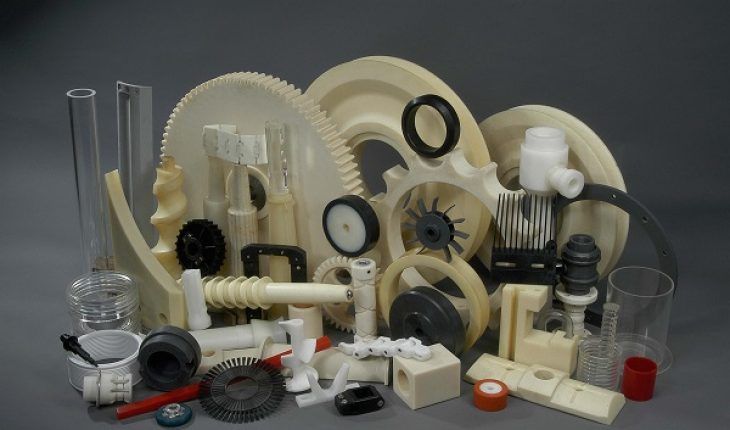Plastics have revolutionized our daily lives since their introduction in the early 20th century. From household items to automobiles, plastics are ubiquitous in modern society due to their low cost and versatility. However, traditional plastics like polyethylene and polyvinyl chloride have some limitations that prevent their use in more advanced technologies. This is where a new class of plastics, called engineering plastics, emerged to fill this need. Engineering plastics exhibit superior mechanical, thermal, and chemical resistance properties over traditional plastics, making them ideal building blocks for high-performance applications. This article explores the major types of engineering plastics and how they are enabling innovations across various industries.
Thermoplastics vs. Thermoplastics
Plastics can broadly be classified into two categories: thermoplastics and thermosets. Thermoplastics, like polyethylene (PE) and polypropylene (PP), soften when heated and harden when cooled. This allows thermoplastics to be recycled and remolded. On the other hand, thermosets like polyurethane and epoxy harden permanently once cured.
Engineering plastics are mainly thermoplastics as their softening ability upon heating enables advanced manufacturing techniques like injection molding and thermoforming. These manufacturing methods allow precise shaping of parts in high volumes, important for mass-produced components. While some thermosetting engineering plastics do exist, thermoplastics have dominated the engineering plastics market due to their superior processability and recyclability.
Major Types of Engineering Thermoplastics
Polyamides (Nylons)
Nylon was one of the earliest Engineering Plastics commercialized. Nylon exhibits excellent toughness, rigidity, and abrasion resistance. It is used in applications that require high strength and durability even under high stresses, like gears, pulleys, and components in automobiles and aircraft. Common grades are nylon 6 and nylon 66.
Polycarbonates (PC)
PC has outstanding clarity and impact resistance, balanced with good heat resistance. It finds wide use as an alternative to polymethyl methacrylate (PMMA) or acrylic in applications like bulletproof glass, protective goggles, and automotive headlamp lenses. Bisphenol-A (BPA) free PC is commonly used today.
Acrylonitrile Butadiene Styrene (ABS)
ABS thermoplastic offers a balance of properties like impact resistance, ductility, and ease of processing. It is used extensively in housings for consumer electronic devices, enclosures, and automotive interior parts that need to withstand impacts.
Polyketones (PK)
Having high heat resistance and chemical stability, PK thermoplastics are suited for extreme environment applications in aircrafts, automotive, and medical devices. Commonly used grades are polyetheretherketone (PEEK) and polyetherketoneketone (PEKK).
Fluoroplastics
Fluoroplastics like polytetrafluoroethylene (PTFE), fluorinated ethylene propylene (FEP), and polyvinylidene fluoride (PVDF) are outstanding thermoplastics with chemical inertness and non-stick properties. They are used in linings, tubing, membranes, and wiring insulation for harsh chemical environments across industries.
Polyphenylene Sulfide (PPS)
PPS exhibits noteworthy heat resistance, strength, and dimensional stability, making it preferable for under-hood automotive components and electrical/electronic applications. It has exceptional flame retardancy with UL94 V-0 rating.
Impact of Engineering Plastics
The key attributes of engineering plastics like mechanical strength, heat resistance, and durability have allowed their use in highly specialized applications. Some examples are highlighted below.
Automotive
From engine components to exterior body paneling, engineering plastics replacing metals have helped reduce vehicle weight for better fuel efficiency. Resins like ABS, PC, and PPS are used in vehicle interiors, engine components, and electrical systems.
Electrical & Electronics
Electronic devices depend on high-performance plastics like liquid crystal polymer, PPS, and PBT that withstand high temperatures to insulate wires and serve as housings. Miniaturization trends equally depend on engineering plastics.
Medical Devices
Biocompatible thermoplastics have enabled devices with intricate precision for diagnostics like radiology imaging parts and surgical devices resistant to steam sterilization. Common materials are PVDF, PEKK, and liquid silicone rubber.
Renewables
Wind turbines and solar equipment utilize fiber reinforced plastics and high-heat resins like PPS and PEEK that can withstand weathering over decades with less maintenance than metals.
Future Prospects
Continuous development of new high-performance plastics and production technologies will expand the possibilities of engineering plastics. Areas like aerospace, alternate energy applications, and 3D printing will also increasingly leverage engineering plastics in the future. Advancements in sustainability aspects of bioplastics will further the engineering materials industry. Innovations in engineering plastics will remain a major enabler for new technologies and development across industries.
From household items to cutting-edge technologies, plastics have progressively become indispensable materials in modern life. Engineering plastics have catered to the growing needs for materials with enhanced mechanical and thermal properties, helping industries overcome design limitations. Their versatility, light weight and manufacturing advantages have given plastics an unmatched edge. Revolutionary innovations over the next decades will continue unlocking engineering plastic’s potential to solve complex technical challenges through creative material science.
*Note:
1. Source: Coherent Market Insights, Public sources, Desk research
2. We have leveraged AI tools to mine information and compile it




